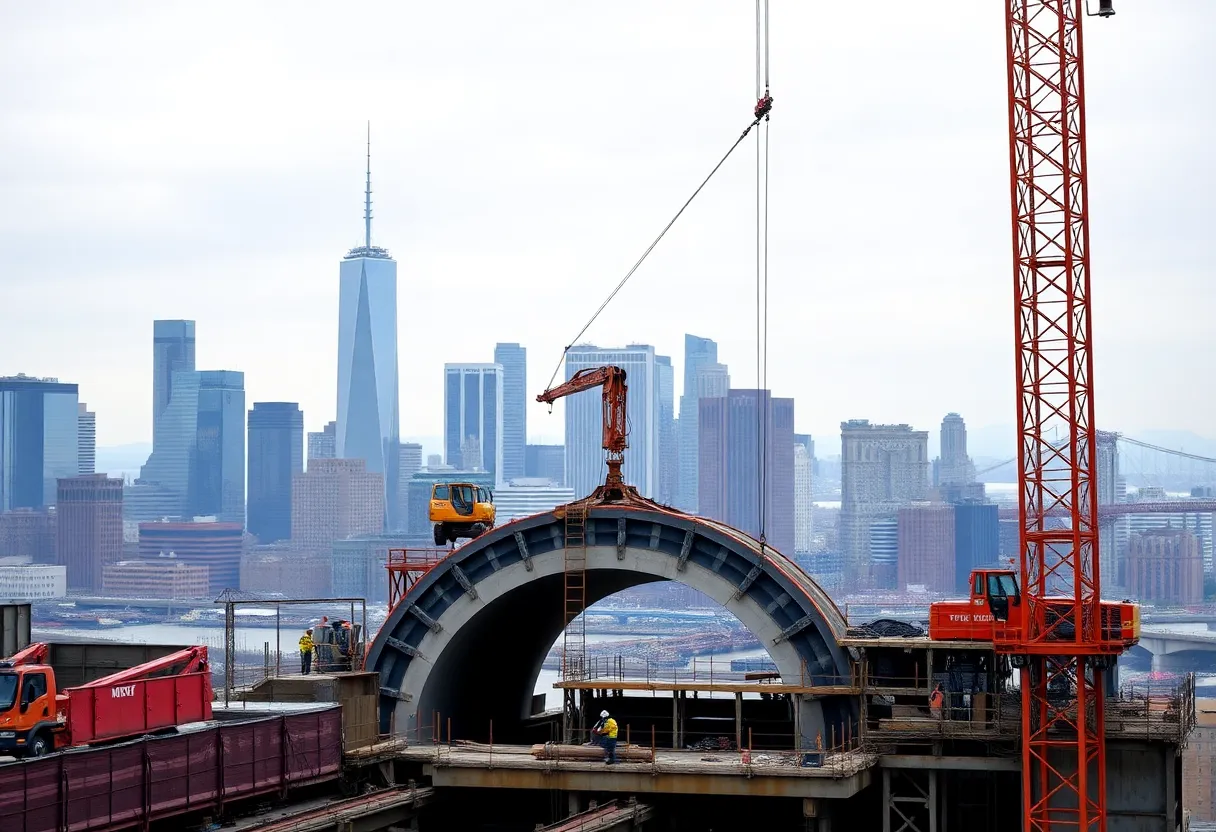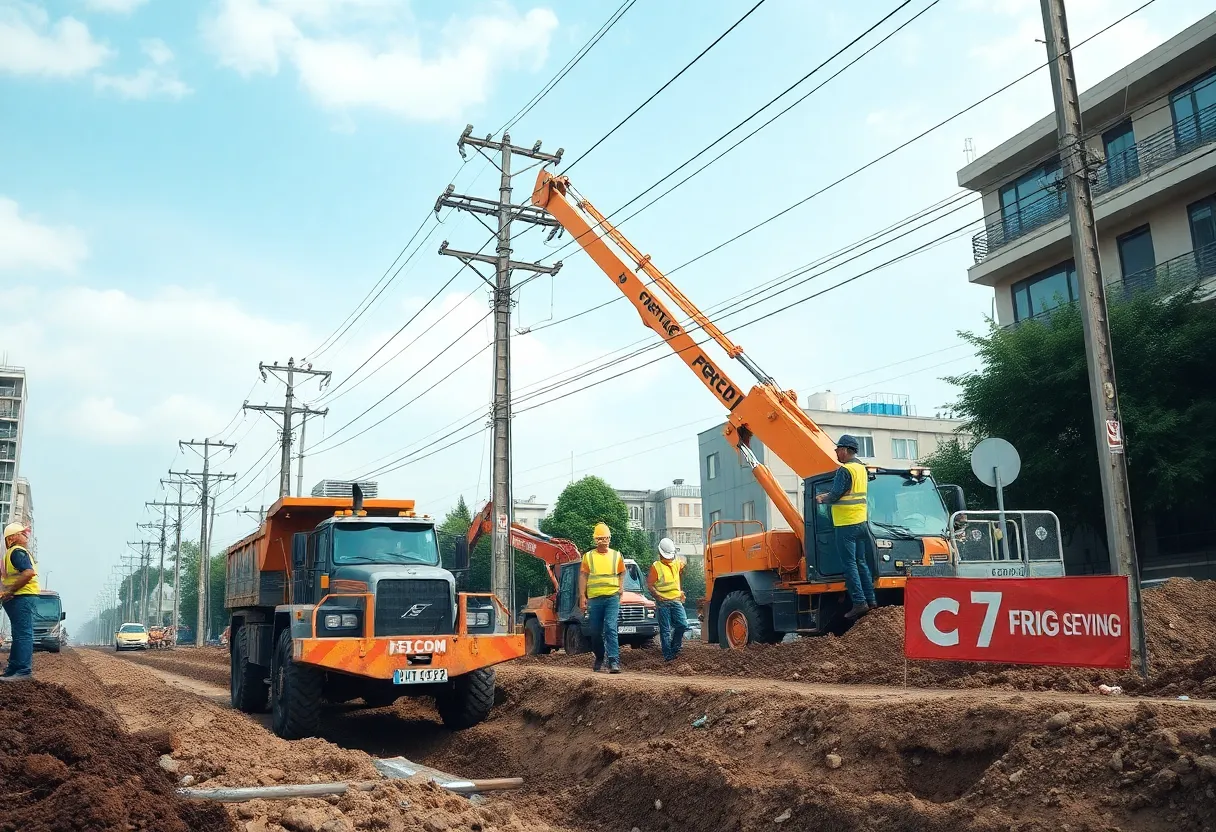Global, August 21, 2025
News Summary
The global concrete contractor market is expanding rapidly, driven by major infrastructure and urban development programs, rising housing demand and public and private investment. Valued at $209.4 billion, the market is forecast to grow significantly as contractors adopt digital tools like BIM, drones, IoT sensors and 3D concrete printing while increasing prefabrication and low‑carbon practices. Growth is strongest in Asia-Pacific, the Middle East and Latin America. Ongoing challenges include skilled labor shortages, material cost volatility and regulatory pressure, and rising remediation demand due to defective concrete blocks in some jurisdictions.
Global concrete contractor market hits $209.4 billion in 2024; set to climb to $284.8 billion by 2030
The global market for concrete contracting was valued at $209.4 billion in 2024 and is forecast to reach $284.8 billion by 2030, reflecting a compound annual growth rate of 5.10%. The fastest demand is coming from large public works and urban building programs in emerging regions, where new roads, transit systems and housing are the biggest buyers of concrete services.
Why the market is growing
The main engine behind the expansion is heavy investment in infrastructure and rapid urbanization. Governments and private developers are funding highways, urban transit, water systems and civic facilities that need large volumes of concrete and experienced contractors for timely delivery. Rising incomes and migration into cities are also increasing demand for affordable housing and commercial development in parts of Asia Pacific, the Middle East and Latin America.
Technology and method shifts shaping the industry
Contractors are turning to a set of modern tools that cut waste, boost speed and help meet rising environmental rules. Among the most widely used are BIM for 3-D planning and clash detection, 3D concrete printing for on-site shaping, and advanced concrete formulations that improve strength and cut carbon. Drones, IoT sensors embedded in pours, and prefabrication techniques are also becoming standard. Prefab and modular work reduce on-site labor needs and shorten schedules.
Green push and material alternatives
There is a clear shift toward lower-carbon practices. Contractors are adopting greener mixes and methods, and some projects are using mass timber as an alternative to steel and concrete in mid- and high-rise buildings. The global mass timber market was valued at about $990.4 million in 2024 and is projected to reach $1.3 billion by 2030, growing at roughly 4.8% CAGR. Mass timber panels offer quicker assembly, lower waste and act as a carbon sink when sourced sustainably.
Workforce and cost headwinds
Despite demand and technology gains, the sector faces persistent challenges. A shortage of skilled workers is widely reported, driven by aging workforces in mature markets and low enrollment in trade programs. That gap raises project costs and slows delivery. Fluctuating raw material prices and tighter environmental rules also add pressure. As a result, many contractors are investing in training and automation to stay competitive and compliant.
Regional highlights and big initiatives
Developing regions show the strongest momentum. Large national initiatives and city programs are cited as major demand drivers. Examples include cross‑border infrastructure corridors, urban renewal missions and national development plans that prioritize new transport and housing. These projects tend to require high volumes of concrete and specialist contractor know‑how.
Concrete product problems and remediation: a case from Ireland
Separately, a long‑running housing defect issue has focused attention on the risks of harmful aggregate impurities. Tens of thousands of homes have reported failing blockwork linked to impurities in concrete blocks. Recent research points to iron sulfide minerals, notably pyrrhotite, as a possible driver of long-term decay in some cases, alongside earlier theories about mica and pyrite. Where blocks degrade, repairs can range from replacing outer wall layers to full demolition and rebuilds. National testing, grant schemes and remediation programs are in place to manage the problem, but debate continues about causes, costs and technical standards for testing and repair.
Notable project example: complex pedestrian bridge work
Large, complex structures continue to showcase modern concrete and steel coordination. A recent long-span pedestrian bridge used a single tall reinforced concrete pylon and a curved suspension alignment to link two riverbanks that did not line up. The project relied on detailed 3‑D modeling for rebar and embedded items, custom-fitted steel girders, and unique cable fabrication and testing overseas. Careful planning and certification kept local fabricators eligible for the work and helped meet schedule and safety goals.
Bottom line
The concrete contracting sector looks set to expand steadily through 2030, driven by infrastructure spending and urban growth. At the same time, the industry must manage labor gaps, supply price swings and rising sustainability demands. Adoption of digital tools, prefabrication and low-carbon materials will shape who wins the next wave of contracts and how projects are delivered.
Frequently Asked Questions
What is the current size of the global concrete contractor market?
The market was valued at approximately $209.4 billion in 2024.
What is the forecast through 2030?
The market is projected to reach about $284.8 billion by 2030, growing at an estimated 5.10% CAGR from 2024 to 2030.
What are the main growth drivers?
Major drivers include public and private infrastructure investment, urbanization, housing demand in emerging markets, and national development programs.
Which technologies are changing concrete work?
Key technologies are BIM, 3D concrete printing, drones, IoT sensors for curing and stress monitoring, and prefabrication methods.
How does mass timber fit into the picture?
Mass timber is an alternative for some mid- and high-rise projects, offering lower embodied carbon and faster on-site assembly. Its market is growing but remains small compared with concrete.
What are the main risks for contractors?
Skilled labor shortages, raw material price volatility, tighter environmental rules, and quality issues tied to contaminated or defective products are top concerns.
Key features at a glance
| Feature | Detail |
|---|---|
| Market size (2024) | $209.4 billion |
| Forecast (2030) | $284.8 billion |
| Forecast CAGR | 5.10% |
| Main drivers | Infrastructure spending, urbanization, housing demand |
| Top technologies | BIM, 3D printing, drones, IoT sensors, prefabrication |
| Growth regions | Asia-Pacific, Middle East, Latin America |
| Major challenges | Skilled labor shortages, material price swings, environmental rules, product quality risks |
| Mass timber snapshot (2024) | Market ~ $990.4 million; projected to $1.3 billion by 2030 |
Deeper Dive: News & Info About This Topic
Additional Resources
- GlobeNewswire: The Rise of Eco-Friendly Concrete Construction
- Wikipedia: Concrete
- Global Construction Review: Ireland’s Concrete Block Nightmare
- Google Search: defective concrete blocks Ireland pyrrhotite
- Woodworking Network: Mass Timber Gaining Traction
- Google Scholar: mass timber construction
- Roads & Bridges: No. 2 Bridge — Scioto River Pedestrian Bridge
- Encyclopedia Britannica: pedestrian bridge
- Pleasanton Weekly: Dublin Construction Kicks Off for Low-Income Senior Housing Project
- Google News: Dublin low-income senior housing construction
Author: Construction NY News
The NEW YORK STAFF WRITER represents the experienced team at constructionnynews.com, your go-to source for actionable local news and information in New York and beyond. Specializing in "news you can use," we cover essential topics like product reviews for personal and business needs, local business directories, politics, real estate trends, neighborhood insights, and state news affecting the area—with deep expertise drawn from years of dedicated reporting and strong community input, including local press releases and business updates. We deliver top reporting on high-value events such as the New York Build Expo, infrastructure breakthroughs, and cutting-edge construction technology showcases. Our coverage extends to key organizations like the Associated General Contractors of New York State and the Building Trades Employers' Association, plus leading businesses in construction and real estate that power the local economy such as Turner Construction Company and CMiC Global. As part of the broader network, including constructioncanews.com, constructiontxnews.com, and constructionflnews.com, we provide comprehensive, credible insights into the dynamic construction landscape across multiple states.





